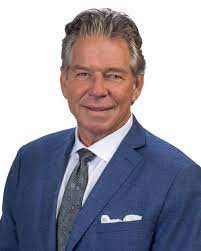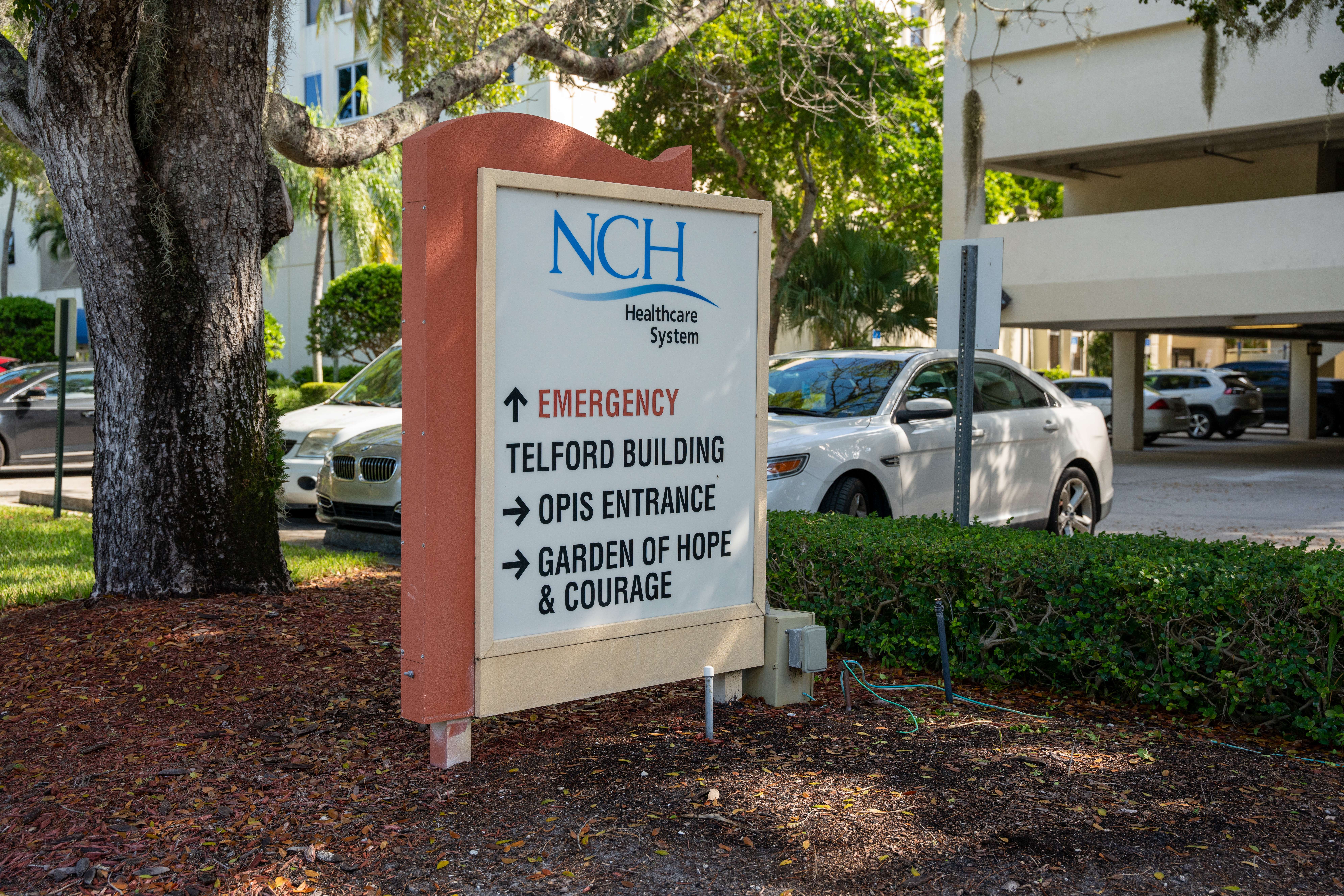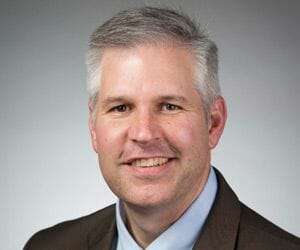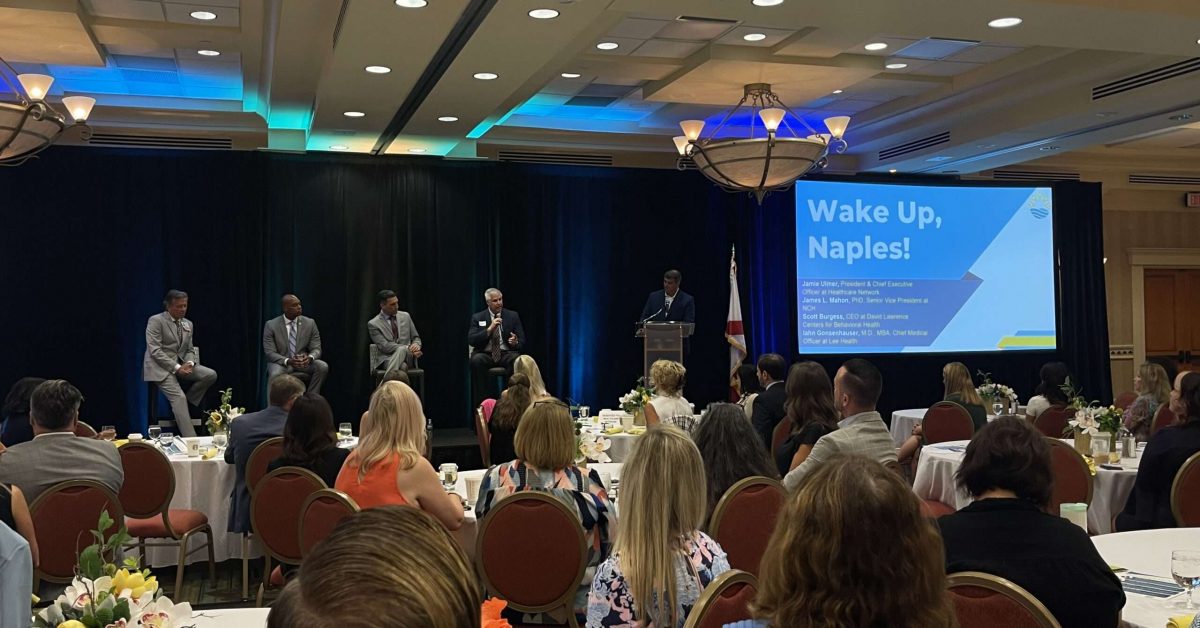Local business leaders gathered last week at the Greater Naples Chamber of Commerce’s Wake Up, Naples event, featuring local health care leaders as they discussed the state of the industry in Southwest Florida.
Four panelists from nonprofit health care organizations, including Healthcare Network, Naples Community Hospital, Lee Health and David Lawrence Centers for Behavioral Health, discussed how the industry has changed since the COVID-19 pandemic, how artificial intelligence could impact the future of doctor’s visits and how general health care has shifted to a prevention-focused mindset.
Strategies in retaining employees

James Mahon
Since the COVID-19 pandemic, the health care industry has been hit with challenges regarding employment and retaining talent.
James Mahon, senior vice president at NCH, pointed to the ongoing issue of lack of workforce housing in Collier County as the biggest obstacle in retaining workers. For 20 years, NCH has relied on 200 seasonal nurses who split their time between Southwest Florida and the northern part of the country. This fiscal year, NCH stopped hiring traveling agency nurses and instead put $8 million into full-time nursing salaries to combat the struggle to find a place to live comfortably in the county.
Creating and maintaining a deep connection with employees is a priority for Lee Health. Iahn Gonsenhauser, chief medical officer at Lee Health, said it’s important to ask staff important questions about what they want for their future careers and how the company can help them toward that goal.
“Maintaining our workforce voice and assuring they’re deeply connected with what they are looking for in terms of the fulfillment and satisfaction with the work that they do is a big focus for us,” Gonsenhauser said.
Transitioning to prevention-focused health care
Although mental health awareness has increased since the pandemic, David Lawrence Centers CEO Scott Burgess said there is a long way to go in fully integrating behavioral health as part of general health care. Burgess said a great challenge in the mental health care community is in pediatrics with the need to identify and treat issues at a faster rate.
“When we can identify [issues], we can intervene early. We know just like every other health care condition, the short- and the long-term prognosis are improved,” Burgess said. “Right now, we’re still in a state where it takes about 10 years from the identified symptom to getting treatment, and that’s unacceptable.”
Gonsenhauser agreed transitioning from treatment-focused to symptomology and prevention-focused services should be the future of health care but realizes it could come at a great cost. He said in order for the transition to happen, the infrastructure of how health systems are built and deployed needs to change, along with how health care is accessed and coordinated.
“As all of these things change, the cost is being passed to our patients,” Gonsenhauser said. “And that cost is not just financial, but it’s in terms of the complication of navigating care.”
 Artificial intelligence impacting the health care experience
Artificial intelligence impacting the health care experience
With AI making rapid advances each year, the possibilities of how the technology can impact physical and mental health care can be overwhelming, Mahon said. Although there have been great advances with robotic surgeries, he is concerned AI and telehealth is causing distance in the relationship between patients and clinicians.
Gosenhauser argued in support of AI technology, such as ambient scribing, saying it could enhance the relationship between patient and doctor. Ambient scribing allows physicians to not have to look at their computers while patients explain their symptoms, as AI will input the information in patients’ health charts.
“In some ways, AI is actually going to bring us closer together, because it’s going to reduce many of those menial tasks that we’ve been distracted by through the digitization of health care and allow us to get back to the people, which is ultimately what it’s really about,” Gonsenhauser said.
Healthcare Network uses AI technology through home monitoring medical devices that track levels, such as blood glucose. Jamie Ulmer, president and CEO of Healthcare Network, said the organization has distributed 300 devices to patients who can use them at certain times of the day.
“We’ve seen where patients at Everglades City have not put theirs on over a week, and then we send all of our community health worker outreach teams down there to check on this patient. And sure enough, this patient’s blood glucose is way out of sorts, we immediately call the ambulance and get that patient in. The patient is treated and back home two days later,” Ulmer said.
Integration of electronic medical records
With thousands of Lee County residents traveling to Collier each day for work, there is a need to have coordination of care between major providers, such as NCH and Lee Health. Having all electronic health records on one software platform is something local health care leaders are hoping to accomplish in the coming years.

Scott Burgess
“I think one of the big pitfalls of our health care industry since the ’90s was the fact that we decided to allow for all these different types of electronic medical records systems, rather than picking one or two,” Burgess said.
Gonsenhauser said if all local providers are on the same electronic records system, such as Epic, the integration of data would be a great benefit to the patient.
“In terms of being a clinician and experiencing [integration], it allows you to look at a patient’s chart across that continuum of care that they receive and act on information that’s coming from everywhere,” Gonsenhauser said. “And very importantly, avoid duplicating additional testing or additional costs that they incur by doing an additional CT or an X-ray at a new hospital when you just had one weeks before.”
As the health care community in Southwest Florida continues to strive to be one of the best in the nation, Mahon emphasized the effort relies heavily on philanthropy.
“This community will pay for the best doctors. We’ve been able to bring in 50 of the top physicians in this country in the last 18 months,” Mahon said. “And the community has responded by donating $240 million in 15 months, which will probably double that in the next two years. Folks here will pay for quality, so it’s up to us collectively to deliver that quality and the dollars will follow.”





